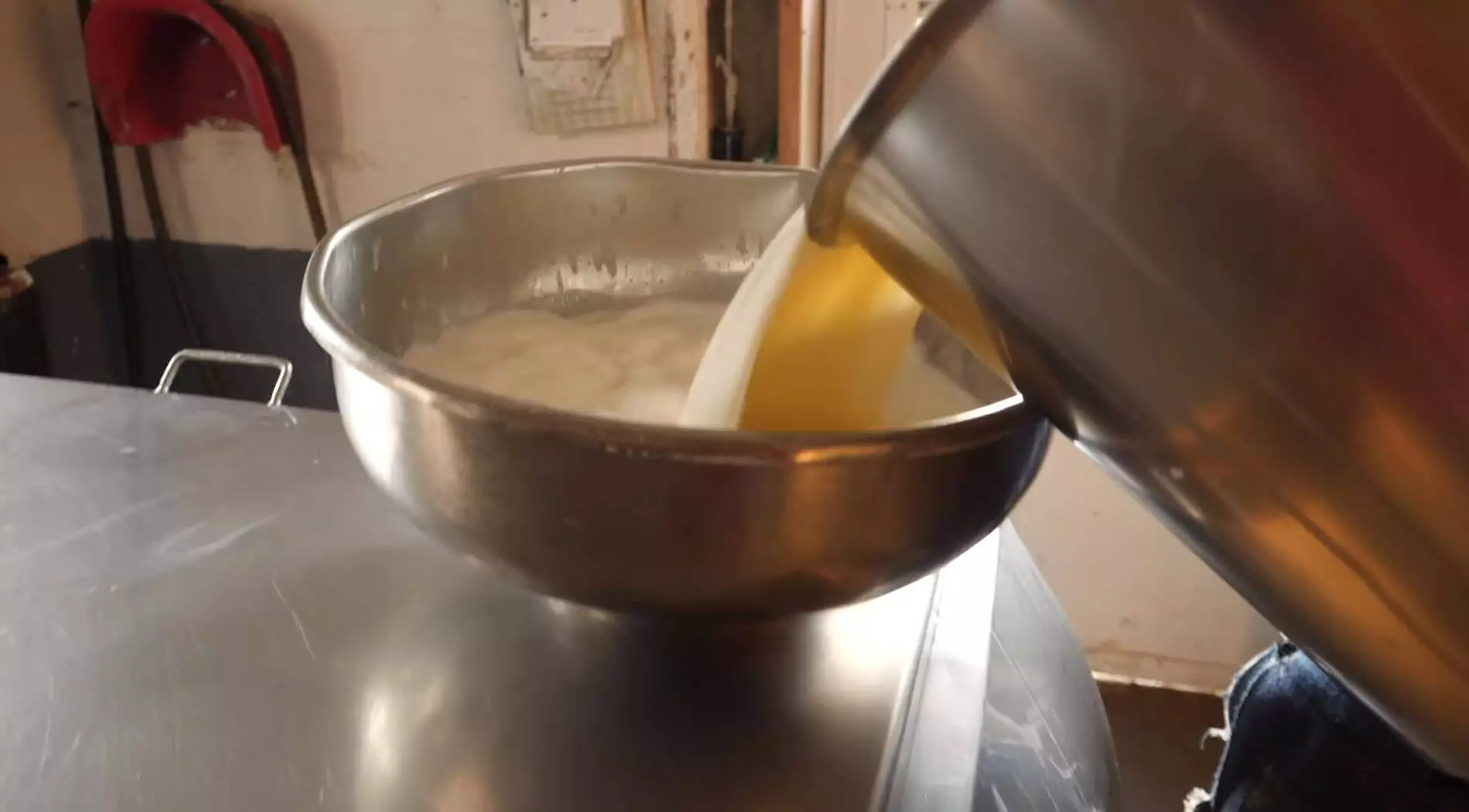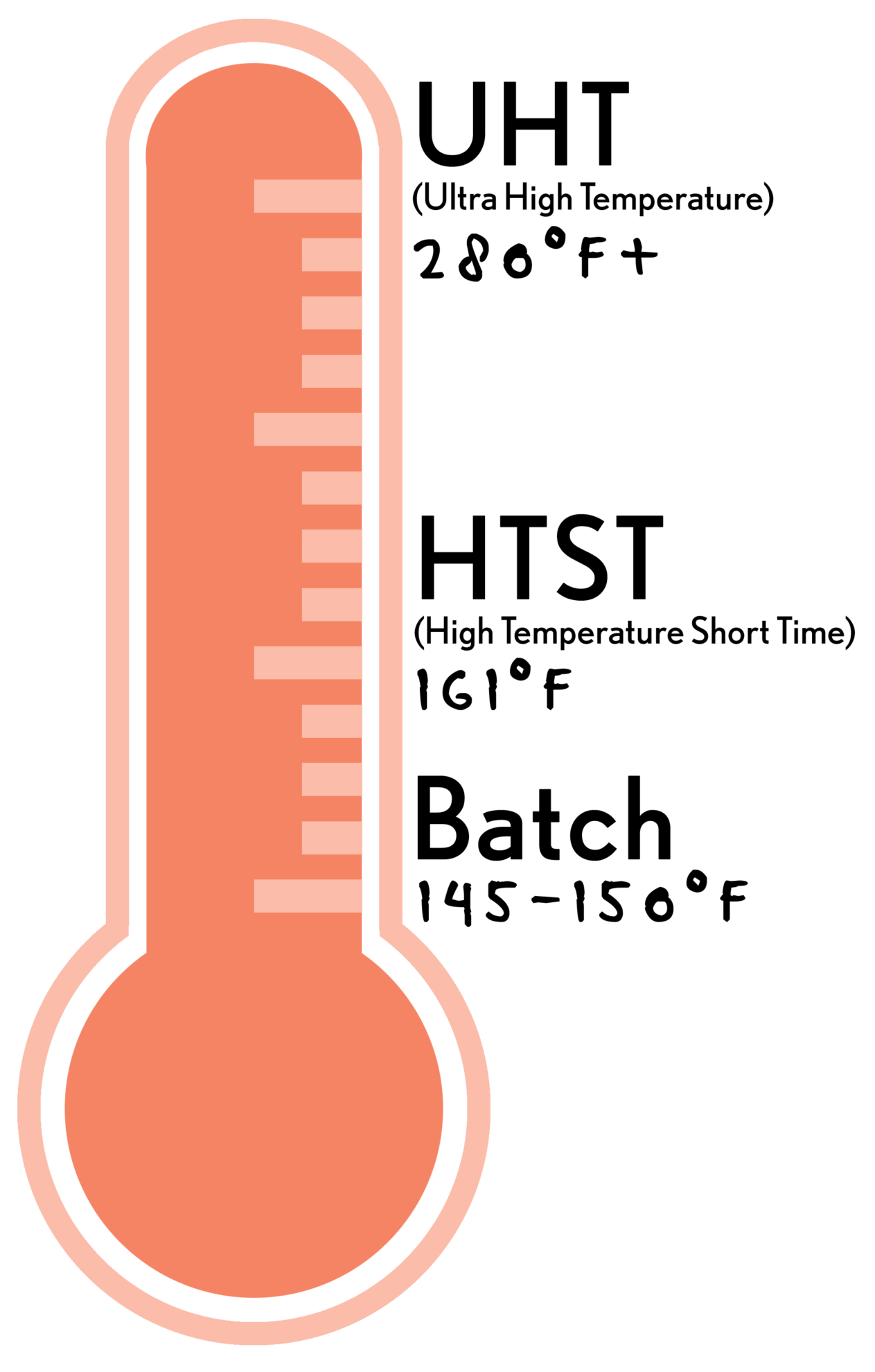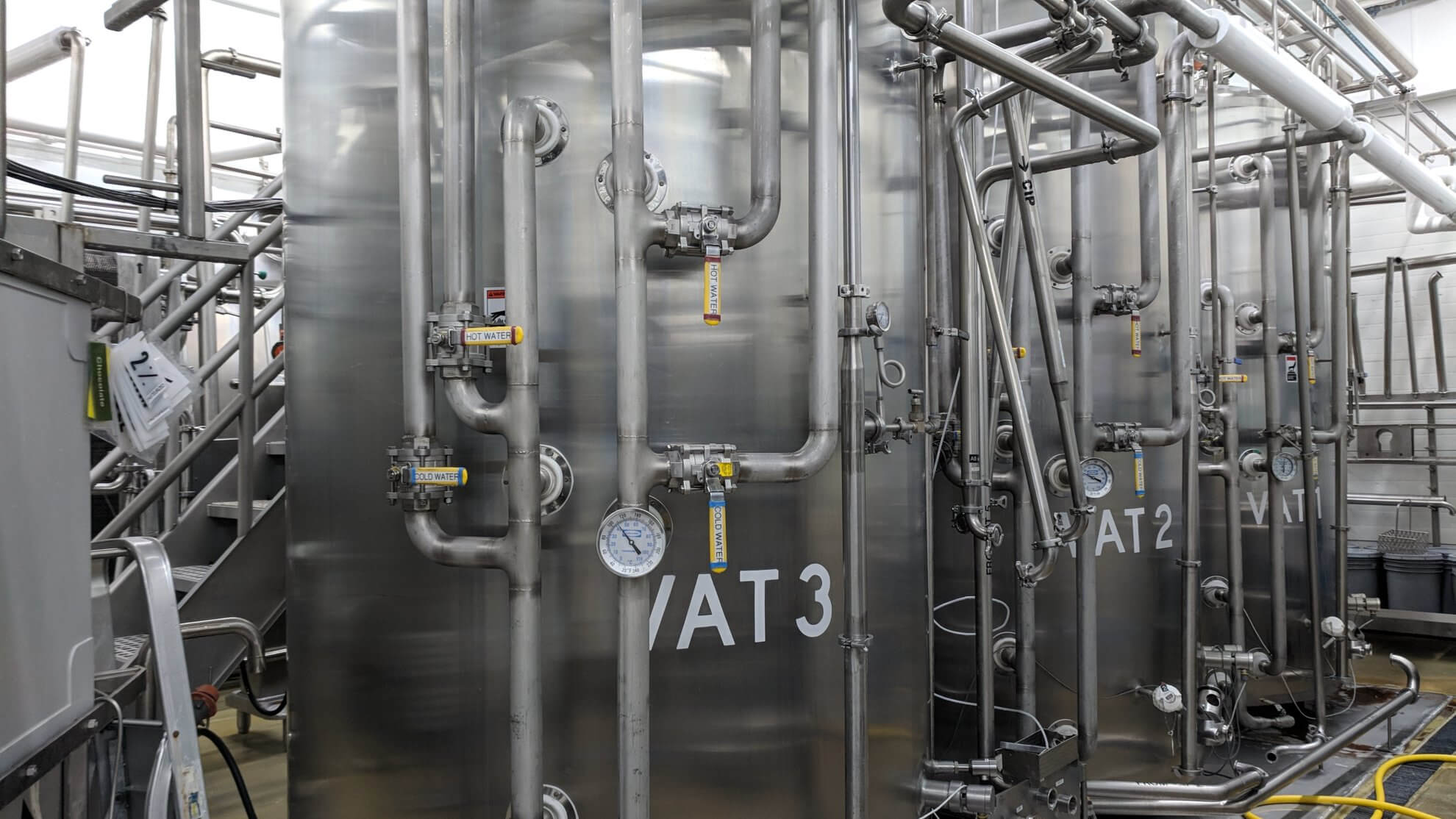
You’ve seen it on the shelf: milk with a 4-month expiration date that touts “Ultra-Filtered” or “Ultra-Pasteurized.” How can milk last that long? What does ultra-filtered mean? What is ultra-pasteurized dairy? Is it a healthy choice? Today we will take a look at the meaning of ‘ultra’ when applied to dairy processing and show you why to avoid it! Let’s start with pasteurization.
The 3 Types of Milk Pasteurization
Low-temperature pasteurized milk differs greatly from high-temperature pasteurized milk. Differences include flavor, nutritional value, and shelf life. There are three methods of dairy pasteurization: batch (vat) pasteurized, high temp short time pasteurized (HTST), and ultra-pasteurized (UP) or ultra-high temp pasteurized.
Batch-pasteurization at Low Temps
A batch pasteurizer consists of a temperature-controlled, closed vat. Operators pump the milk into the vat and heat it slowly to 145°. They hold it at that temperature for a minimum of 30 minutes, cool it, and then pump it out of the vat. This method remains rare today; local and regional creameries mainly use it. Low-temperature pasteurization destroys dangerous pathogens, but keeps the helpful bacteria our bodies need! Lower temperatures also preserve the fabulous, farm-fresh flavor of the milk.
Kalona SuperNatural batch-pasteurizes its fluid milk, cultured milk, and cream top yogurt.
High Temp Short Time Pasteurization
To pasteurize larger quantities of milk in a more efficient manner, creameries began developing new processes as early as 1893. Today, high temp short time (HTST) is the most common form of pasteurization in the milk industry. Milk flows continuously through a series of thin metal plates that hot water heats in an HTST processor. The process heats the milk to a minimum of 161° F for at least 15 seconds, and then rapidly cools it.
Kalona SuperNatural HTST-pasteurizes its cottage cheese, sour cream and french onion dip.
Ultra-High Temp (UHT or UP) Pasteurization
Ultra-pasteurized (UP) milk is heated to a minimum of 280° F and held for 2 seconds, while ultra-high temperature (UHT) milk is heated to temperatures between 275° and 300° F. Both of these methods use commercially sterile equipment to produce a shelf-stable product that does not require refrigeration before opening. The goal of using UP or UHT pasteurization is to extend the shelf life and create a shelf-stable product.
Kalona SuperNatural does not pasteurize any of its products using UHT or UP.

How Do I Tell the Difference?
Check the label! Manufacturers must include the pasteurization method on product packaging. You will find this information in various places on the label. See examples below!

History of Pasteurization
Louis Pasteur developed pasteurization in 1864, aiming to extend the life of his favorite wine, building on the Medieval practice of heating wine and beer to prevent souring. Scientists soon discovered that pasteurizing milk not only extended its shelf life but also destroyed deadly microorganisms that spread diseases. These discoveries led to milk pasteurization becoming a widespread practice in Europe, and it slowly caught on in the U.S.
Reformers pushed for pasteurization in the U.S. in response to “slop milk,” a growing public health crisis in the early 20th century. Urban dairies located next to whiskey distilleries produced “slop milk.” Many believed this was causing the spread of infectious diseases.
In 1908, Chicago became the first city that required all milk sold within its limits be pasteurized. Then in 1924, the U.S. Public Health Service developed the Standard Milk Ordinance to assist states with voluntary pasteurization programs. By the late 1940s, all milk sold in the U.S. was required by law to be pasteurized. Historians agree that pasteurizing milk led to a significant decline in the spread of infectious diseases and the infant mortality rate in urban areas.

Next Up: Ultra-Filtered Dairy
Ultra-filtration is one of the newest trends in dairy processing. This technique pushes milk through a semipermeable membrane filter, allowing specific components of milk to pass through based on their molecular weight. Why do brands choose to do this? Because it allows a dairy brand to engineer the final product. This is how ultra-filtered dairy brands can achieve higher protein milk (milk proteins have heavier molecular weight) with less sugar (lactose has lower molecular weight). Why avoid ultra-filtered milk? It’s overly-processed. By machine-selecting which components make the cut, the natural balance of the milk is lost.
Don’t be fooled by the word “Ultra” When it Comes to Dairy
“Ultra” may sound like a good thing, but beware! When it comes to dairy products, the term “ultra” is an identifier of overly-processed dairy. The purpose of UP or UHT pasteurization is to extend the shelf life of products and make them shelf-stable. With UP or UHT pasteurized dairy, you lose the farm fresh flavor and the good bacteria. And the purpose of ultra-filtration is to create “engineered milk.” Similar to ultra-pasteurized dairy, this unnecessary process disrupts the natural balance of the milk.
Choose better dairy!
At Kalona SuperNatural, we strive to provide you and your family with the best possible products in the most natural state possible. That’s exactly why we pasteurize our products at low temps, don’t homogenize the cream, and are certified organic!
Watch the video below to learn more about our brand!
